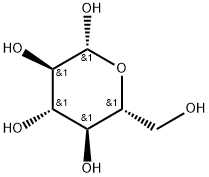β-D-Glucose

|
- ₹4200 - ₹29600
- Product name: β-D-Glucose
- CAS: 492-61-5
- MF: C6H12O6
- MW: 180.16
- EINECS:207-756-2
- MDL Number:MFCD00148912
- Synonyms:BETA-D(+)GLUCOSE;BETA-D-GLUCOSE;B-D-(+)-GLUCOSE;BLOOD SUGAR;GLUCOSE, B-D-(+)-;GLUCOSE D(+);GLUCOSE, HYDRATE;GRAPE SUGAR
2 prices
Selected condition:
Brand
- TCI Chemicals (India)
Package
- 25G
- 500G
- ManufacturerTCI Chemicals (India)
- Product numberG0047
- Product descriptionβ-D-Glucose (contains α-D-Glucose) min. 85.0 %
- Packaging25G
- Price₹4200
- Updated2022-05-26
- Buy
- ManufacturerTCI Chemicals (India)
- Product numberG0047
- Product descriptionβ-D-Glucose (contains α-D-Glucose) min. 85.0 %
- Packaging500G
- Price₹29600
- Updated2022-05-26
- Buy
| Manufacturer | Product number | Product description | Packaging | Price | Updated | Buy |
|---|---|---|---|---|---|---|
| TCI Chemicals (India) | G0047 | β-D-Glucose (contains α-D-Glucose) min. 85.0 % | 25G | ₹4200 | 2022-05-26 | Buy |
| TCI Chemicals (India) | G0047 | β-D-Glucose (contains α-D-Glucose) min. 85.0 % | 500G | ₹29600 | 2022-05-26 | Buy |
Properties
Melting point :156-158 °C
storage temp. :Keep in dark place,Inert atmosphere,2-8°C
solubility :DMF: 10 mg/ml; DMSO: 20 mg/ml; PBS (pH 7.2): 10 mg/ml
form :powder to crystal
Boiling point :410.8±45.0 °C(Predicted)
Density :1.732±0.06 g/cm3(Predicted)
pka :12.12±0.70(Predicted)
color :White to Almost white
Merck :14,4459
InChI :InChI=1/C6H12O6/c7-1-2-3(8)4(9)5(10)6(11)12-2/h2-11H,1H2/t2-,3-,4+,5-,6-/s3
InChIKey :WQZGKKKJIJFFOK-XSJRRZLONA-N
SMILES :C([C@H]1O[C@@H](O)[C@H](O)[C@@H](O)[C@@H]1O)O |&1:1,3,5,7,9,r|
LogP :-1.880 (est)
CAS DataBase Reference :492-61-5(CAS DataBase Reference)
EPA Substance Registry System :.beta.-D-Glucopyranose (492-61-5)
storage temp. :Keep in dark place,Inert atmosphere,2-8°C
solubility :DMF: 10 mg/ml; DMSO: 20 mg/ml; PBS (pH 7.2): 10 mg/ml
form :powder to crystal
Boiling point :410.8±45.0 °C(Predicted)
Density :1.732±0.06 g/cm3(Predicted)
pka :12.12±0.70(Predicted)
color :White to Almost white
Merck :14,4459
InChI :InChI=1/C6H12O6/c7-1-2-3(8)4(9)5(10)6(11)12-2/h2-11H,1H2/t2-,3-,4+,5-,6-/s3
InChIKey :WQZGKKKJIJFFOK-XSJRRZLONA-N
SMILES :C([C@H]1O[C@@H](O)[C@H](O)[C@@H](O)[C@@H]1O)O |&1:1,3,5,7,9,r|
LogP :-1.880 (est)
CAS DataBase Reference :492-61-5(CAS DataBase Reference)
EPA Substance Registry System :.beta.-D-Glucopyranose (492-61-5)
Safety Information
| Symbol(GHS): |

|
||||||||||||||||||||||||||||||||||||||||||
|---|---|---|---|---|---|---|---|---|---|---|---|---|---|---|---|---|---|---|---|---|---|---|---|---|---|---|---|---|---|---|---|---|---|---|---|---|---|---|---|---|---|---|---|
| Signal word: | Warning | ||||||||||||||||||||||||||||||||||||||||||
| Hazard statements: |
|
||||||||||||||||||||||||||||||||||||||||||
| Precautionary statements: |
|






